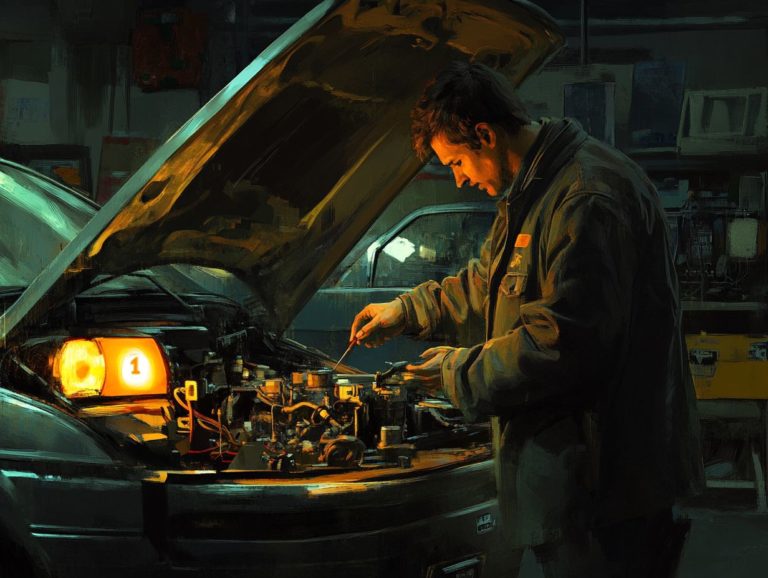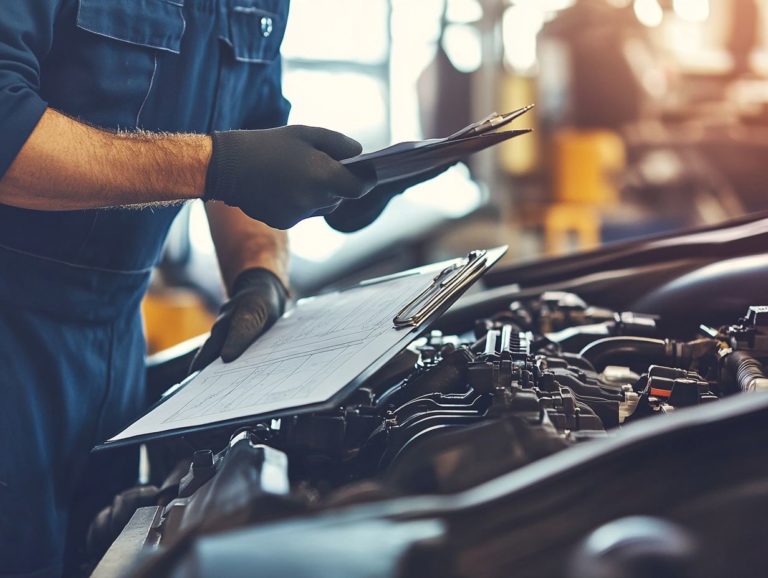The Importance of Regular Brake Inspections
Brakes are vital for your safety. Don’t wait until something goes wrong!
Regular brake inspections can save you money and keep you and your loved ones safe on the road.
This article explains why these inspections are important, how to spot warning signs, and the risks of ignoring them.
You ll learn how often to get inspections and what to expect.
By the end, you ll see that routine brake maintenance saves money and gives you peace of mind.
Contents
- Key Takeaways:
- Understanding the Importance of Brake Inspections
- Signs that Your Brakes Need to be Inspected
- Potential Consequences of Neglecting Brake Inspections
- How Often Should You Get Your Brakes Inspected?
- What to Expect During a Brake Inspection
- Benefits of Regular Brake Inspections
- Frequently Asked Questions
Key Takeaways:
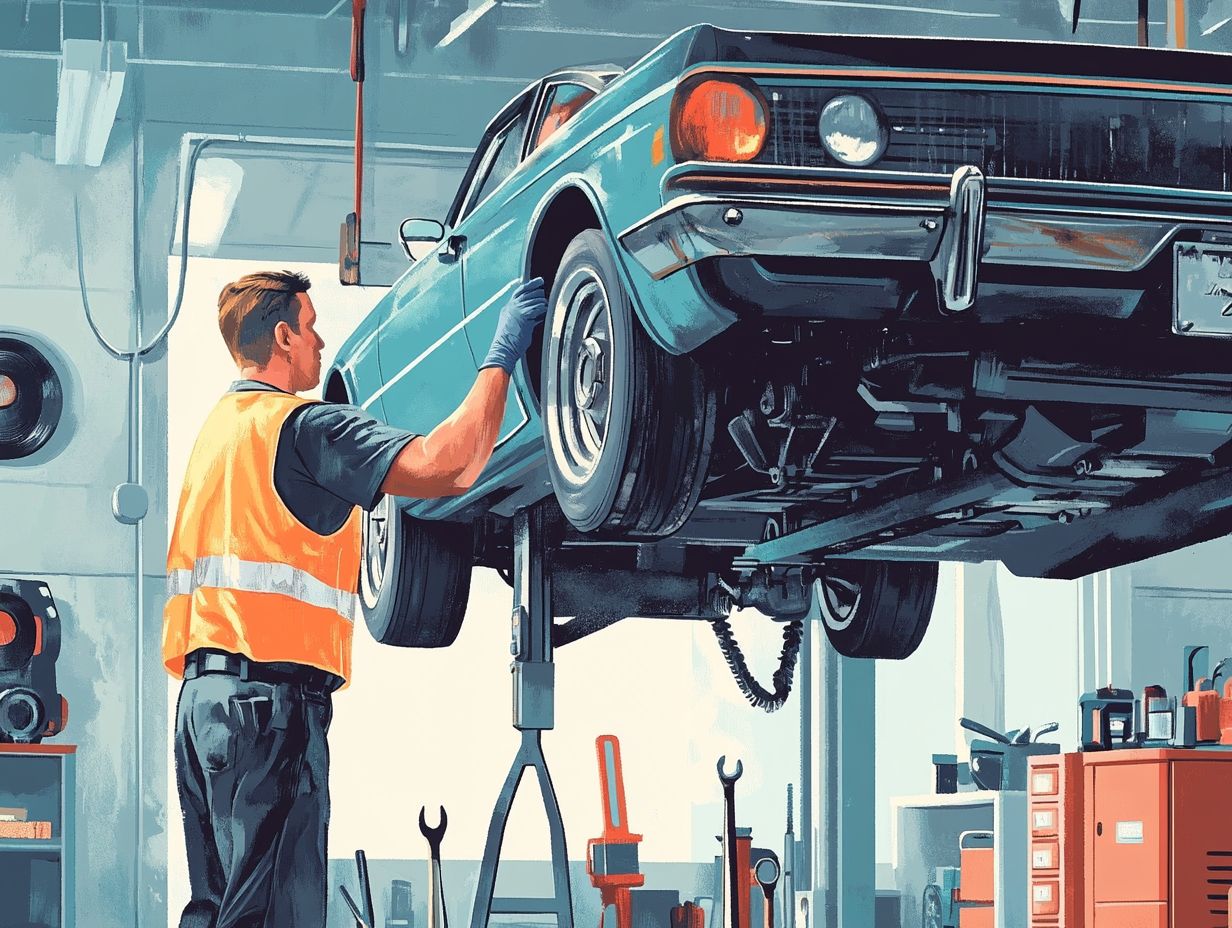
Understanding the Importance of Brake Inspections
Brake inspections are an essential part of your vehicle maintenance routine. Understanding the importance of regular brake maintenance plays a crucial role in ensuring your safety on the road and preventing unexpected brake problems.
Regular check-ups boost brake performance and prolong the life of components like brake pads, rotors, and lines.
In a world where the safety of both you and your passengers is paramount, the significance of these inspections is a must for your safety! By establishing a routine maintenance schedule and being alert to any signs of brake wear, you can protect yourself from potential hazards and avoid expensive repairs down the line.
Why Regular Inspections are Necessary
Regular brake inspections are essential for identifying potential issues before they turn into serious problems. By being proactive with routine maintenance, you can significantly reduce the risk of costly brake repairs in the future.
Brake inspection services are vital in assessing key components like brake wear and fluid levels. These checks help you spot early signs of trouble, ensuring everything operates smoothly.
Neglecting these inspections can lead to decreased effectiveness, putting you and others on the road at risk during critical situations.
Signs that Your Brakes Need to be Inspected
Recognizing the signs that your brakes require inspection is essential for ensuring both safety and optimal performance in your vehicle. Be alert to common indicators such as unusual brake noise, a decrease in braking efficiency, and any noticeable changes in the feel of the brake pedal.
These warning signs may point to various issues, including worn brake pads, low brake fluid levels, or even potential brake system failure. By identifying these signals early, you can effectively avoid hazardous situations on the road and maintain the reliability of your braking system.
Identifying Warning Signs
Identifying warning signs associated with brake problems is crucial for timely servicing and ensuring your vehicle’s safety.
These signs can range from the glaringly obvious like a dashboard warning light flickering to subtle clues, such as noticeable vibrations during braking or that grinding noise you can’t quite shake off. Each of these symptoms serves as a vital reminder that your braking system may be at risk and needs immediate attention.
By routinely monitoring these indicators, you not only prevent potential brake degradation but also enhance your overall driving safety.
Staying vigilant about regular inspections can significantly extend the lifespan of your brake components, ensuring that your vehicle operates optimally and safely on the road.
Potential Consequences of Neglecting Brake Inspections
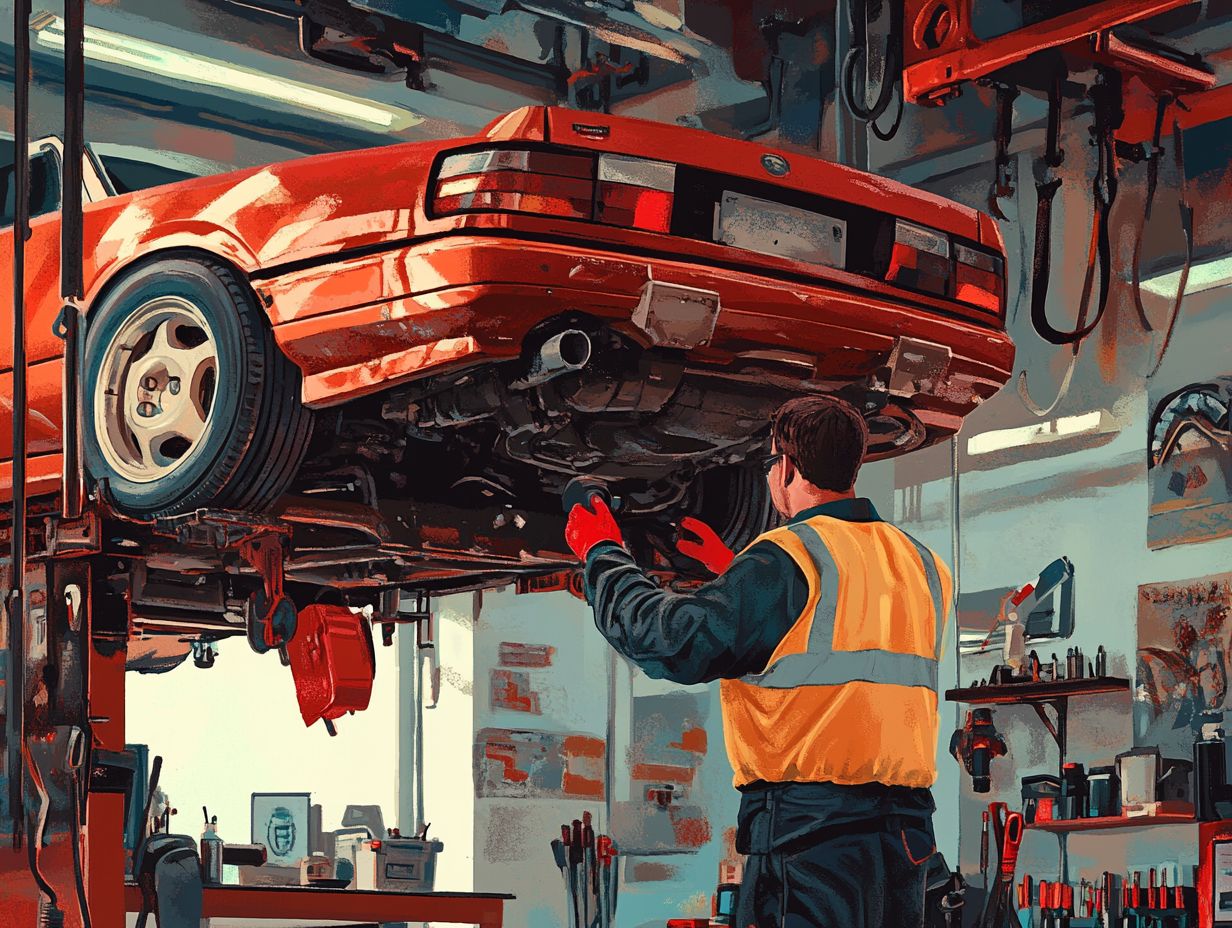
Neglecting brake inspections poses serious safety risks. It can also cause significant damage to your vehicle.
Ignoring routine maintenance leads to financial strain and endangers your safety and that of others on the road.
Safety Risks and Damage to Vehicle
A compromised braking system can drastically reduce performance. This increases the chances of accidents and emergency situations.
Worn or malfunctioning brakes raise the risk of accidents and place you and pedestrians in danger. When brakes don t respond as they should, stopping distances can dangerously extend.
By staying vigilant about your brakes, you can prevent failures that could happen at critical moments. This not only secures safer travels but also enhances your vehicle’s lifespan.
How Often Should You Get Your Brakes Inspected?
Establishing a proper inspection schedule for your brakes is crucial for optimal vehicle performance and safety. Experts suggest having your brakes inspected at least once a year, or even more often depending on your driving habits, the conditions you encounter, and the age of your vehicle.
Regular brake servicing allows you to monitor essential components like brake fluid levels, brake pads, and brake rotors. Brake rotors are the metal discs that brake pads clamp onto to stop the vehicle.
By adhering to a diligent maintenance routine, you can significantly minimize the risk of brake failure and drive with greater peace of mind.
Recommended Frequency for Inspections
The recommended frequency for brake inspections depends on several factors, including the type of vehicle you drive and the driving conditions you encounter.
If you drive a heavier vehicle frequently navigating stop-and-go traffic, you may need to schedule checks more often. As a rule of thumb, arrange for brake inspections at least every six months or around 6,000 miles to ensure both safety and optimal performance.
Weather conditions, driving habits, and the type of brake pads you choose can affect how often your brakes need servicing. Establishing a regular maintenance routine not only extends the life of your braking system but also gives you the peace of mind you deserve while on the road.
What to Expect During a Brake Inspection
During a brake inspection, you can anticipate a thorough evaluation conducted by skilled brake technicians. They meticulously assess every critical aspect of your braking system, ensuring that everything is covered from checking the brake fluid levels to scrutinizing the condition of essential components like brake pads and rotors.
Rest assured, your safety is their priority, and no detail will be overlooked.
Steps and Components Checked
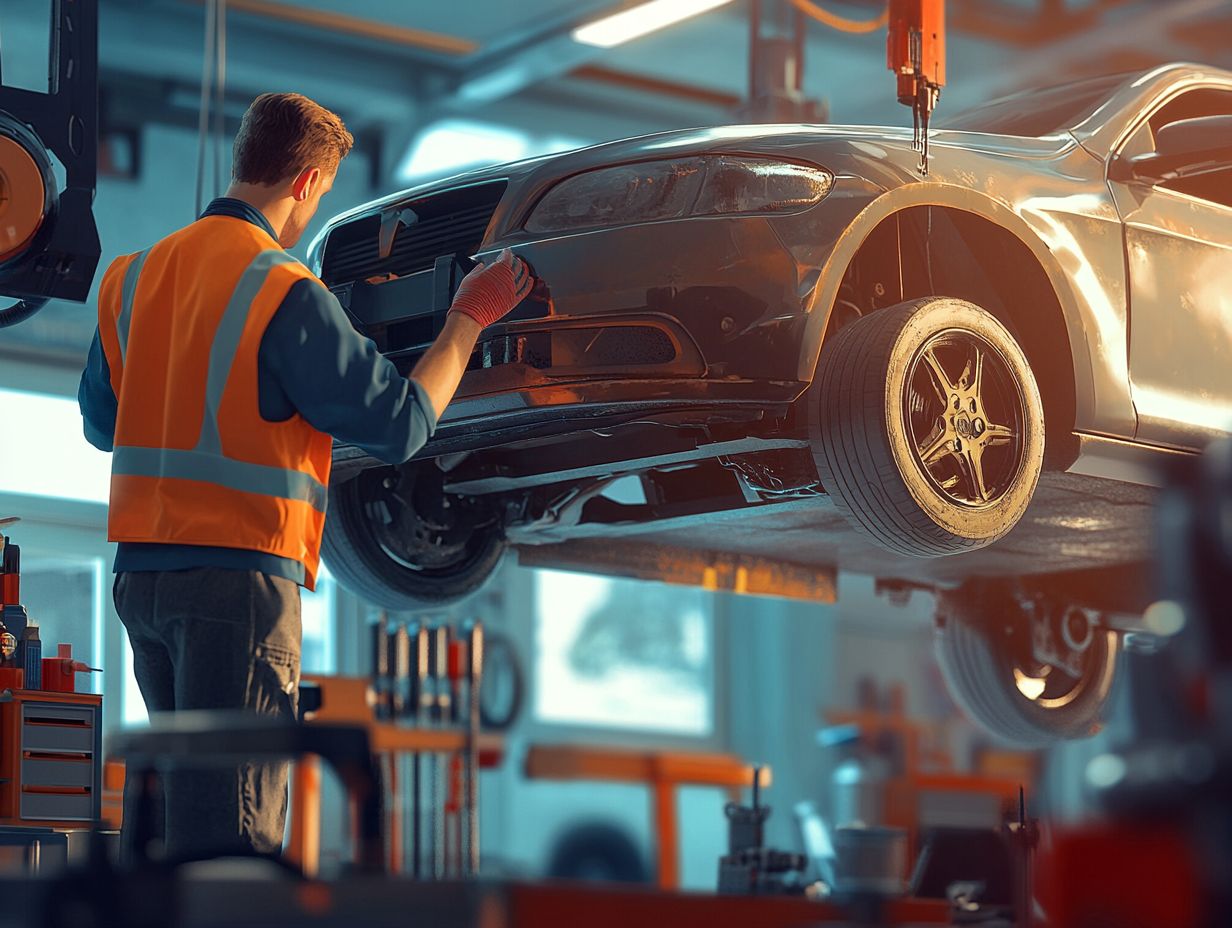
A thorough brake inspection includes several steps to ensure safety and performance.
This process typically starts with a visual examination of the brake pads and rotors, looking for signs of wear and potential damage. Technicians measure pad thickness to ensure they meet the manufacturer s specifications; excessively worn pads can lead to brake failure.
Next, they assess the brake fluid’s level and quality for any signs of contamination that could hinder braking efficiency. The condition of the brake lines is equally critical. Any leaks or cracks can jeopardize the entire braking system.
Finally, a test drive may be performed to evaluate brake response and ensure the vehicle operates smoothly, underscoring the importance of thorough brake system checks.
Benefits of Regular Brake Inspections
Regular brake inspections provide numerous benefits, including cost savings on future repairs, heightened safety, and improved overall brake performance.
By maintaining your braking system proactively, you minimize the chances of unexpected failures and enjoy the peace of mind that comes from knowing your vehicle has reliable safety features.
Investing in routine brake checks leads to long-term savings and ensures the safety of you and your passengers.
Cost Savings and Peace of Mind
One of the most significant advantages of regular brake inspections is the potential for cost savings on repairs and enhanced brake reliability.
By proactively evaluating your brakes, you can catch minor issues before they turn into expensive repairs, saving you money over time. Enhanced reliability reduces the frequency of repairs and builds your confidence on the road. A well-maintained braking system ensures your safety, providing peace of mind that every stop is both controlled and effective.
This blend of financial prudence and improved safety makes regular inspections crucial for responsible vehicle ownership.
Frequently Asked Questions
What is the importance of regular brake inspections?
Regular brake inspections are crucial for ensuring your safety while driving. Understanding the benefits of regular brake inspections helps ensure that your brakes function properly, helping to avoid accidents and keep you safe.
How often should I get my brakes inspected?
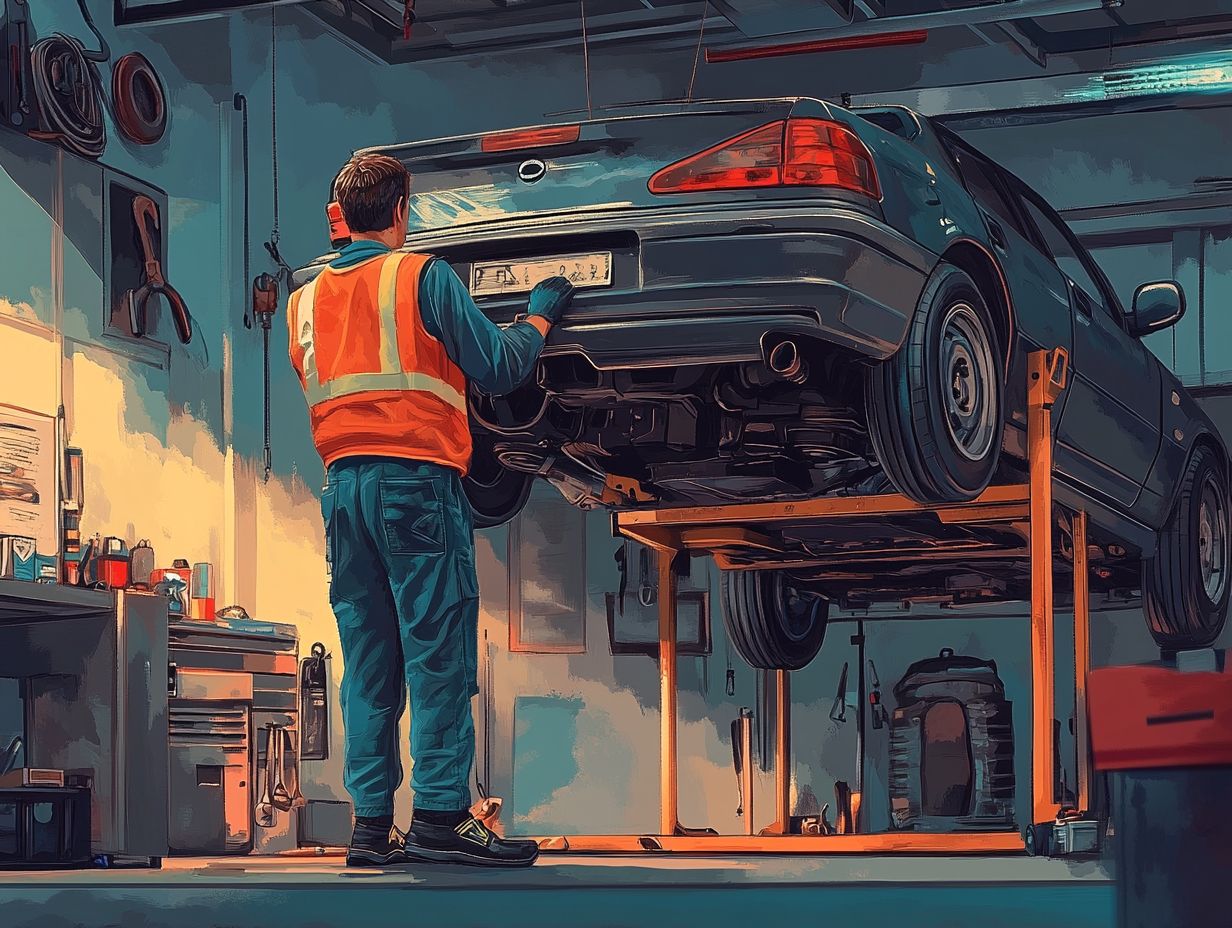
Make sure to have your brakes checked at least once a year or every 12,000 miles, whichever comes first. If you notice warning signs like squealing or grinding noises, get your brakes inspected immediately!
What are the consequences of neglecting regular brake inspections?
Neglecting regular brake inspections can lead to serious consequences, such as brake failure while driving, resulting in accidents, injuries, or fatalities.
What are some warning signs that indicate I need a brake inspection?
Warning signs that indicate you need a brake inspection include squealing or grinding noises when braking, a vibrating or pulsating brake pedal, and a longer stopping distance than usual. Don’t wait! If you hear any unusual sounds, get your brakes checked right away.
Can I inspect my brakes myself?
While it’s possible to inspect your own brakes, it’s recommended to have a professional mechanic do it. They have the training and expertise to properly diagnose and fix any brake issues.
What happens during a brake inspection?
During a brake inspection, a mechanic checks the condition of your brake pads, rotors, calipers, and brake fluid. They also look for leaks or other potential issues that could affect your brake system.




